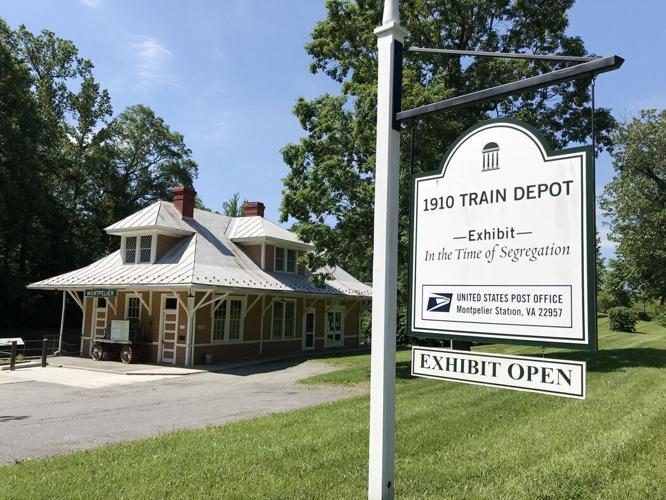Following News Stories about Historical Memory
In August, I passed on news about the sudden closing of a small post office near James Madison’s Montpelier.
The stated reason was an exhibit on segregation in another part of the building, though that exhibit has been up for years. The action came shortly after a dramatic change of leadership at Montpelier.
The latest report from that part of Virginia is that the post office has reopened as suddenly as it closed.
Another story about how we publicly remember the Revolutionary era that I’ve followed involves the far-from-hagiographic murals about George Washington in San Francisco’s George Washington High School. This month N.P.R. ran a story by Jon Kalish about the choices schools face with those and other historic murals which people find problematic for different reasons.
In addition, a documentary on the Washington High School controversy by Deborah Kaufman and Alan Snitow called “Town Destroyer” premiered in California. Here’s the movie’s trailer.
Closer to home (my home), Christ Church in Cambridge is currently the home for an art installation titled “Here Lies Darby Vassall.” It remembers a man born enslaved in one of the “Tory Row” mansions along Brattle Street before the Revolution. He reportedly met Washington when the general moved into the house where his parents were working.
As an adult Darby Vassall maintained a business in Boston and was active in the local abolitionist movement. He died on the eve of the Civil War and was buried in the tomb of the family that once owned him and his own family.
Nicole Piepenbrink’s art installation “Here Lies Darby Vassall” can be viewed from 6:00 to 8:00 P.M. until 6 November.
The stated reason was an exhibit on segregation in another part of the building, though that exhibit has been up for years. The action came shortly after a dramatic change of leadership at Montpelier.
The latest report from that part of Virginia is that the post office has reopened as suddenly as it closed.
Another story about how we publicly remember the Revolutionary era that I’ve followed involves the far-from-hagiographic murals about George Washington in San Francisco’s George Washington High School. This month N.P.R. ran a story by Jon Kalish about the choices schools face with those and other historic murals which people find problematic for different reasons.
In addition, a documentary on the Washington High School controversy by Deborah Kaufman and Alan Snitow called “Town Destroyer” premiered in California. Here’s the movie’s trailer.
Closer to home (my home), Christ Church in Cambridge is currently the home for an art installation titled “Here Lies Darby Vassall.” It remembers a man born enslaved in one of the “Tory Row” mansions along Brattle Street before the Revolution. He reportedly met Washington when the general moved into the house where his parents were working.
As an adult Darby Vassall maintained a business in Boston and was active in the local abolitionist movement. He died on the eve of the Civil War and was buried in the tomb of the family that once owned him and his own family.
Nicole Piepenbrink’s art installation “Here Lies Darby Vassall” can be viewed from 6:00 to 8:00 P.M. until 6 November.


1 comment:
A minor correction, John: Darby Vassall died in October 1861, in the first months of the Civil War, not on the war's eve.
His funeral and burial in the Christ Church crypt was part of the parish's centennial observance, October 15, 1861, 100 years to the day after the building opened for its first service.
Darby Vassall's burial that day is confirmed by an article in the Cambridge Chronicle, October 19, 1861; but there is no mention of it in the description of the centennial events in Samuel Batchelder's official history of the parish [1893]. Perhaps a deliberate omission?
Post a Comment